
Mitsubishi Shogun Sport SUV review
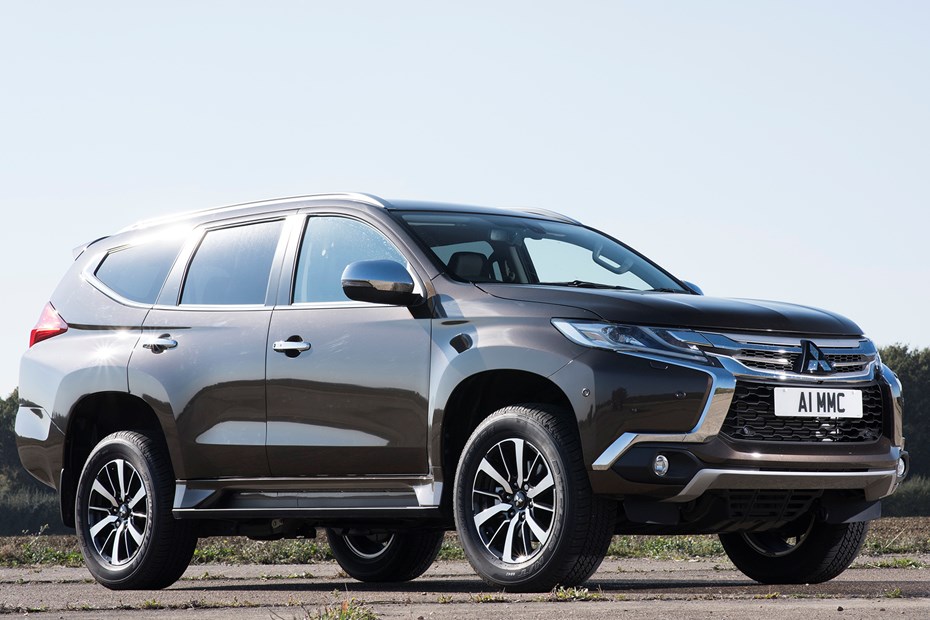
At a glance
| Price new | £29,705 - £31,705 |
|---|---|
| Used prices | £16,250 - £27,001 |
| Road tax cost | £190 |
| Insurance group | 38 - 43 |
Get an insurance quote with

|
|
| Fuel economy | Not tested to latest standards |
| Range | 464 miles |
| View full specs for a specific version | |
Available fuel types
Diesel
Pros & cons
- Excellent off-road ability
- Good standard kit levels
- Should be reliable
- Poor ride and overall comfort
- Slow, thirsty diesel engine
- Lacklustre interior quality
Mitsubishi Shogun Sport SUV (18-21) rivals
Overview
The modern SUV is more often than not a crossover that looks like an off-roader but drives like a hatchback. This Mitsubishi Shogun Sport is the opposite of that – a rugged, utilitarian seven-seat SUV designed to offer a combination off excellent off-road ability and usable on-road driving manners.
>> We rate the best seven-seater SUVs for 2020
Not to be confused with the larger (now offsale) Mitsubishi Shogun, the Sport suffix has been used before to indicate its smaller size – although, don’t be fooled, the Shogun Sport is considerably bigger than your average crossover.
Rivals include the equally robust SsangYong Rexton, gargantuan Toyota Land Cruiser and more road-focused Kia Sorento. Can the Shogun Sport bridge the gap between rough-and-tumble off-roader and practical seven-seater family car? Read our expert full review to find out.
Formidable off-road credentials
First thing’s first, Mitsubishi needs to get the Shogun Sport’s off-road ability nailed down if it wants many of its existing customers to return. Thankfully, a broad array of off-road addenda means the Shogun Sport makes light work of what most owners will throw at it, displaying ample ability even in challenging conditions.
Every version comes with Super Select II four-wheel drive that can be switched at speeds of up to 62mph, plus a rear differential lock (delivering better traction off-road) for tricky conditions.
All of this makes the Shogun Sport an excellent off-roader, as we experienced during the UK launch of the vehicle. The standard Hill Descent Control (Hill Start also included) works well, and outright grip and composure over mud and gravel inclines is accomplished.
Mitsubishi’s Terrain Control System is also fitted and has four different modes: Gravel, Mud/Snow, Sand and Rock – each one tweaking the vehicle’s traction control, throttle input and automatic transmission (plus a number of other parameters) settings. A 218mm ground clearance and 700mm wading depth are also included, while braked towing capacity is an impressive 3.1 tonnes.
Less-impressive on-road driving manners
Sadly, the Shogun Sport can’t transfer its off-road prowess into class-leading driving manners when it’s on tarmac, despite all-new multilink rear suspension. In fact, it doesn’t even come anywhere close.
For starters, the low to medium speed ride is poor and seems to be able to pick out bumps and cracks in what appear to be perfectly smooth roads. There’s a horrible bouncing sensation over the rear axle when you go over a bump, too, belying the chassis’ Mitsubishi L200 pickup roots.
Handling is also an issue. The Shogun Sport feels too ungainly for many country roads and fails to give the driver any real confidence on what’s going on under the front wheels. Turn into a bend and you’ll experience vague steering that requires an armful of lock to carry out any significant cornering. Utilitarian? Sure. An on-road rival for the Kia Sorento or Hyundai Santa Fe? Not on this evidence.
Only one engine and transmission on offer
Keeping things simple, Mitsubishi offers one engine with the Shogun Sport – a 2.4-litre turbodiesel producing 181hp. It’s not especially fast, nor economical or environmentally friendly and lags behind other engines in the Shogun Sport’s class. What’s more, it’s noisy under load and, together with high wind noise, makes the Shogun Sport feel down on outright refinement.
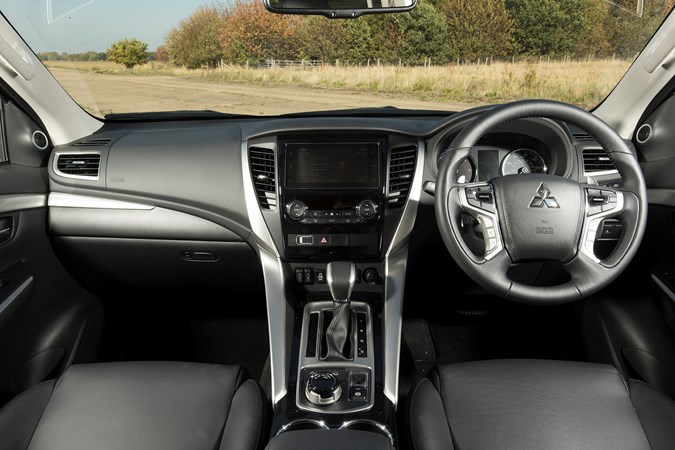
The sole transmission option is an eight-speed automatic. Admittedly, it has little to work with thanks to the lacklustre engine, but still disappoints with sporadic hesitation and a willingness to shift up the ratios too quickly.
Cabin is robust, but down on quality
The Shogun Sport’s cabin is usable, and reasonably well laid out, but – again – falls behind rivals such as the Kia Sorento. Materials used are of a hard-wearing quality (which will of course appeal to some buyers) but don’t have the same finish as those in the Sorento – an interior that hardly feels like it will fall apart, either.
Delve into the infotainment system and, again, you’re presented with an outdated set of graphics and inconsistent responses. It’s not the only car in this class guilty of such crimes, mind, plus it does improve as you get used to it.
While the all-leather electrically adjustable front seats are comfortable, their positioning is too high especially for the driver. Regardless of how they’re adjusted anyone 5’10” or above will feel perched on top of the car, not in it. What’s more, if the sun visor is lowered, a considerable amount of the view out of the windscreen is compromised for those who sit fairly close to the wheel.
Good standard equipment levels
There’s nothing especially cutting edge in the Shogun Sport’s kit list, but there is plenty of useful equipment that more premium rivals may charge extra for. All models come with full leather upholstery (with electrically adjustable front seats), dual-zone climate control, cruise control, a 7.0-inch touchscreen, a reversing camera, Apple CarPlay/Android Auto and LED headlights.
Meanwhile Shogun Sport 4 models also come kitted out with heated front seats, a 510W Mitsubishi Power Sound System and adaptive cruise control.
A number of crucial safety gadgets are also included (bringing the insurance group down), such as Forward Collision Mitigation (autonomous emergency braking), blindspot monitoring, a 360-degree camera and Ultrasonic Misacceleration Mitigation System – whereby the vehicle automatically applies the brakes if the driver accidentally accelerates with an object in front of the car.
Room for seven occupants
Fitted as standard with seven seats, the Shogun Sport is just about capable of carrying seven adults on a short journey. Space in the second row is good, while those in the third shouldn’t have too many problems on a short journey. Indeed, the Shogun Sport betters a number of rivals in this area.
Bootspace is negligible with all seven seats in place yet improves in five-seat mode. However, it’s still not as competitive as rivals such as the SsangYong Rexton and Kia Sorento in the latter configuration



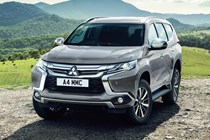
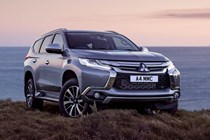
.jpg)
.jpg)
.jpg)
.jpg)
.jpg)
.jpg)
.jpg)
.jpg)
.jpg)
.jpg)
.jpg)
.jpg)
.jpg)
.jpg)
.jpg)
.jpg)
.jpg)
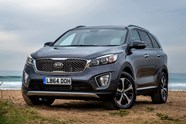
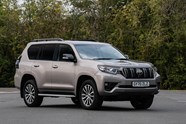
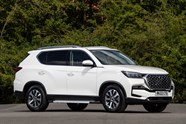



.jpg?quality=50)
.jpg?quality=50)
.jpg?quality=50)
.jpg?quality=50)
.jpg?quality=50)
.jpg?quality=50)
.jpg?quality=50)
.jpg?quality=50)
.jpg?quality=50)
.jpg?quality=50)
.jpg?quality=50)
.jpg?quality=50)
.jpg?quality=50)
.jpg?quality=50)
.jpg?quality=50)
.jpg?quality=50)
.jpg?quality=50)